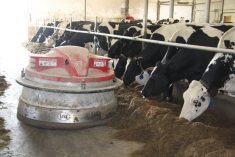RED DEER Ñ North American law enforcement agencies are developing new plans to better deal with extremists in the animal rights movement.
Groups such as People for the Ethical Treatment of Animals and the Humane Society of the United States are registered as not-for-profit legal entities but others such as the Animal Liberation Front and Stop Huntingdon Animal Cruelty, or SHAC, have claimed responsibility for more extreme activities, says livestock consultant Tim O’Byrne.
“There is a fringe element within that has an activist, extremist kind of bend,” he said at the Alberta Farm Animal Care annual meeting in Red Deer April 1.
Read Also

Manitoba extends Crown land rent freeze
Manitoba government links the continued rental rate freeze on grazing and forage leases to economic and environmental challenges facing the industry
SHAC was organized to protest animal use in research projects owned by Huntingdon Life Sciences laboratories in Great Britain.
“The FBI considers SHAC the number one domestic terrorist entity in the United States,” O’Byrne said.
There are moderates within groups such as PETA who do not wish to harm people as they protest, but there are other groups willing to use force to advocate their causes.
In 2003 the Animal Liberation Front took credit for 38 acts of domestic terrorism. In its annual report, the group published successful activist measures that could include arson, theft, break and enter and corporate disruption.
The organization took credit for a bombing a number of years ago at Alta Genetics, an embryo and semen collection station near Calgary.
O’Byrne recently attended a training session in the U.S. on agricultural bioterrorism that explained what is known about various groups. Participants were taught how to conduct vulnerability assessments and write a threat management plan to counter possible attacks.
AFAC is developing an anti-terrorism plan to help members avoid becoming targets. The organization has access to government and law enforcement information on specific and non-specific threat levels and recommendations in the event of an attack or foreign animal disease outbreak.
Potential terrorist targets include the health system, livestock, petrochemical industry, telecommunications, infrastructure, transportation and environment.
The RCMP has a special section within its national security investigation section that monitors extremists. Every province has at least one office dealing with these matters including biological, nuclear and chemical threats. They are in touch with other security agencies across North America.
“They take this threat seriously,” said cpl. Ed Turco, one of two RCMP livestock investigators in Alberta.
“We’re not talking about being paranoid but people should be aware that this is now a concern within this country,” Turco said.















